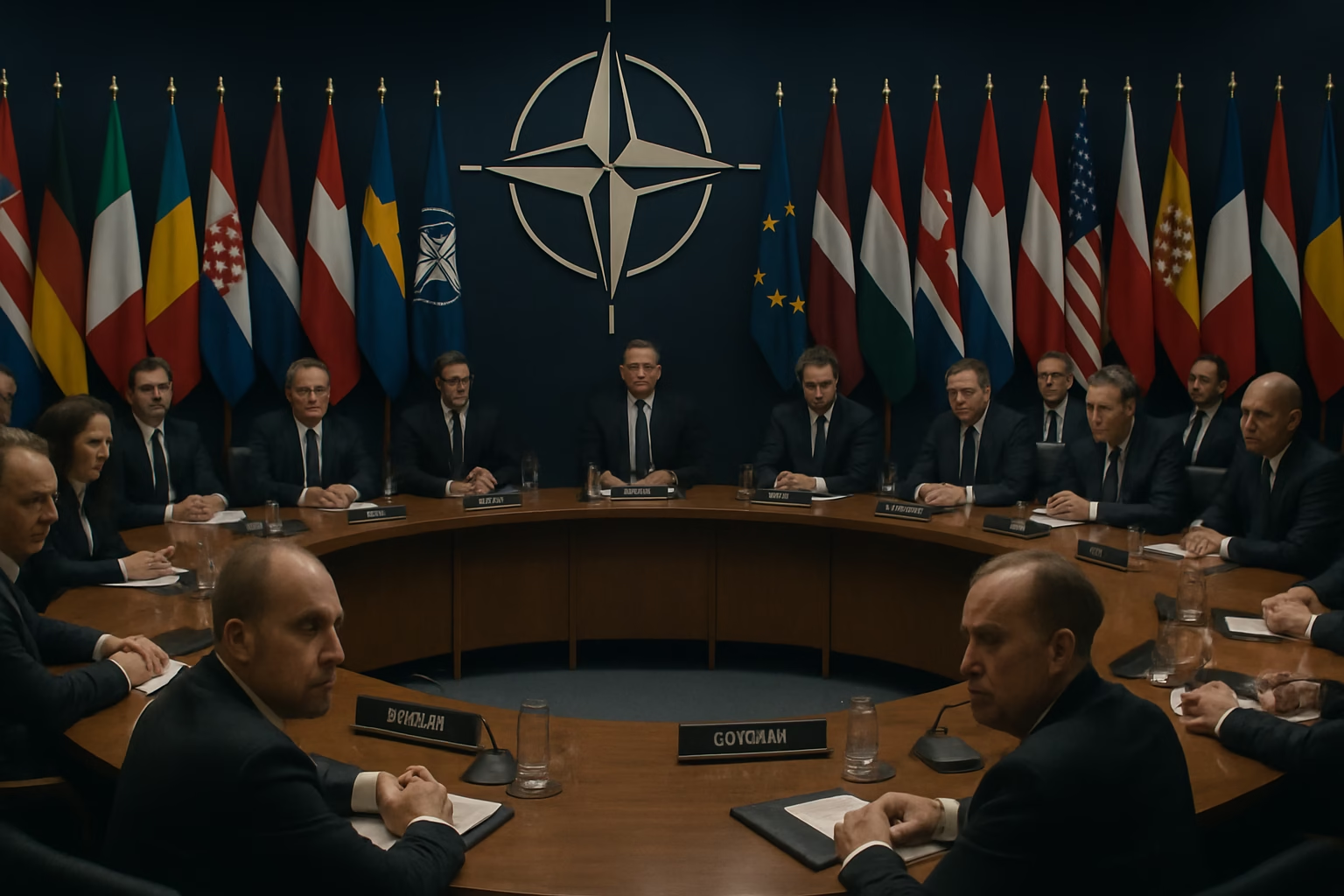Date of Publication: September 11, 2025 Date of Last Update: September 11, 2025 Reviewer: Dr. Alvis is a Senior Fellow at the Center for Strategic Policy Studies.
The Story
Imagine waking up to the sound of alarms—19 military drones are flying over your head.. That shocking picture happened all over Poland last week. Poland called on NATO Article 4 after an alleged Russian breach of Polish airspace. This diplomatic action, not military action, was the alliance’s quickest response to a threat since the Cold War. But what does that process of talking to each other look like? What makes the “U.S. response” so important? And can a treaty bring people together without starting a war?
Table of Contents
What is NATO Article 4?
NATO Article 4 allows any member to ask for talks. This can occur if the member believes its “territorial integrity, political independence, or security” is in danger. It doesn’t need military action, but it does need the alliance’s attention, discreetly shaping decisions before force.
The most recent trigger: Russian drones flying over Poland
On September 10, 2025, 19 drones flew into Polish airspace during Russia’s huge air attack on Ukraine. Polish and NATO troops, such as F-16s, Dutch F-35s, and Italian AWACS, shot them down. This was the first time a NATO member had fired in the Ukraine conflict.
Donald Tusk, the Prime Minister of Poland, called it a “large-scale provocation.” He said it was the closest Europe had gotten to conflict since World conflict II. He also urged for urgent talks under “Article 4”. NATO met right away in Brussels, where allies condemned the infringement and said they were united
How NATO Article 4 Works, Step by Step
- Perceived threat triggers demand—in this example, drone incursions.
- The North Atlantic Council meets right away to talk about Article 4.
- Next comes “consultation and intelligence sharing.”
- Decisions are made together—from air patrols to announcements.
| Stream | Trigger Point | Outcome |
| Article 4 | Perceived threat or violation | Consultation, not collective defense |
| Article 5 | Confirmed armed attack on member territory | Mutual defense activated |
The USA’s role in NATO Article 4 Consultations
The United States is in charge of the alliance’s military and diplomatic actions. When a drone crashed in Poland, the U.S. didn’t say anything right away, but its strategic air command readiness and sharing of satellite data were widely recognized in helping allies reach a quick agreement
Framework 1: The Three-Stage Consultative Model
- Alert Phase—Ally issues a threat alert (Poland, for instance, flags drone infringement).
- Council Phase – NATO’s council gets together to look over intelligence and responses.
- Response Phase – Allies work together to stop threats and send messages to the public.
Case Study
A detailed breakdown of the September 10 incident:
| Metric | Value |
|---|---|
| Drones detected | 19 |
| Planes involved | F-16, F-35, AWACS, tankers |
| Article 4 demand | Within hours |
| NATO consultations | Held same day in Brussels |
Framework 2: The Risk-Escalation Matrix
| Threat Level | NATO Response | Objective |
|---|---|---|
| Low | Quiet consultations | Containment |
| Medium | Public statements + alert postures | Deterrence reinforced |
| High | Prep for Article 5 discussion | Escalation managed carefully |
The Good and Bad Things About Using NATO Article 4
Pros:
- Signals a united stand against provocation
- Allows for flexible coordination without military uproar
- Confirms the alliance’s seriousness over territory
Cons:
- Some people could think it’s merely for procedures and not for protection.
- Needs to be carefully aligned to avoid causing unneeded alarm.
- Doesn’t guarantee automatic defense.
Often Asked Questions
- Why did Poland use NATO Article 4? Drone attacks on its territory jeopardized its safety, which led to official NATO talks.
- Does Article 4 need military action? No, it’s not a defense guarantee; it’s only a suggestion.
- Is this the first time this has been done?
Poland used Article 4 eight times before 2022 and again in 2022. - What’s the difference between this and Article 5?
Article 5 starts collective defense, and Article 4 starts strategic deliberation. - What did NATO do this time? They held quick talks, made expressions of solidarity, shared intelligence, and raised the air alert.
- Article 4 can cause a war?
It’s meant to stop things from getting worse, not make them worse. - What did Russia say? Russia said it was a navigation error, but the EU and NATO didn’t believe them.
- Does the U.S. always support NATO Article 4 requests? Usually, yes, although it depends on how credible the danger is.
Compliance and Sourcing
Sources include Reuters, AP News, The Guardian, Wikipedia page on the 2025 drone incursion, and NATO’s official treaty text. Coverage grounded in live, peer-trusted reporting and official documents.
Method
This blog is based on real news, eyewitness testimony, NATO reports, and expert analysis. We checked data and timeframes against several sources to be sure they were correct.
Limitations
This article explains what happened up to September 11, 2025. Changes that happen quickly change people’s minds.
What to Do Next
- Watch NATO briefings—keep up with Poland’s talks as they change
- Keep an eye on changes in Eastern European air defense—they can give you clues about the bigger picture.
- Follow diplomacy every year—think tanks can show how NATO is changing over time.
Discover more from NewsBusters
Subscribe to get the latest posts sent to your email.

1 thought on “NATO Article 4 in Action: Poland vs Russian Drones”